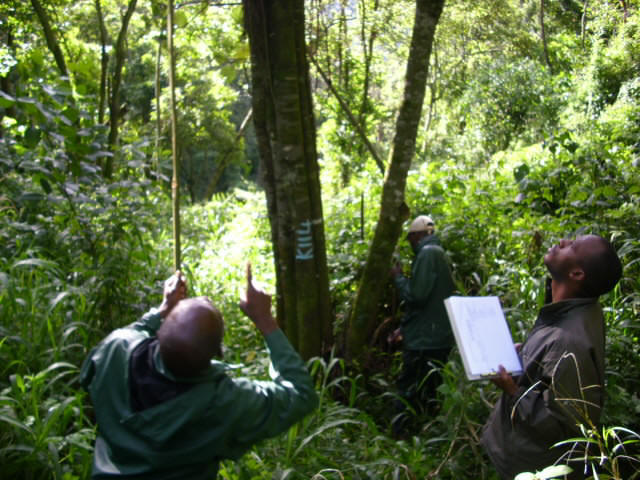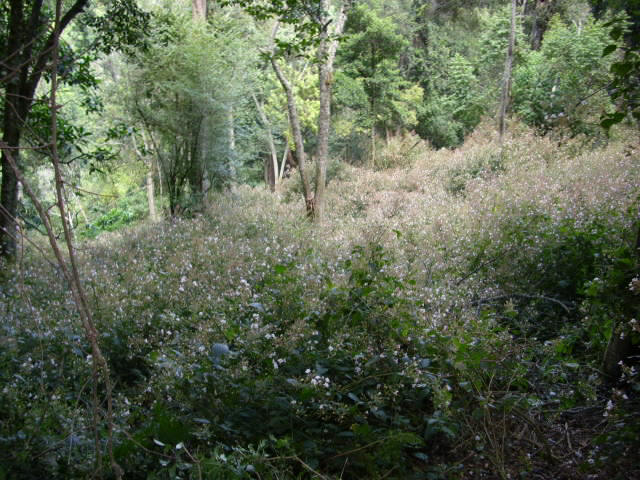|
In 2011,
ITFC established a new monitoring activity,
funded
by
a Climate Change grant fromthe MacArthur
Foundation, through WCS. This type of study –called phenology
–assesses variation in the timing of the events in a plant’s
life cycle i.e. seasonal changes in leaf bearing and shedding,
flowering and seed production.
Why a phenology study in Bwindi?
 Seasonal variation in plant
behavior and production
has implications for
the availability of resources for pollinators and seed and fruit
consumers and thus
may have
major ecological consequences. Given the recent attention for
climate change,
disturbances in rainfall patterns and temperature are increasingly relevant.
The importance of tropical forests like Bwindi for
biodiversity
conservation as well
as the sequestration of carbon cannot be overstated. Thus, this
study seeks to observe and quantify changes in the phenology of
trees in Bwindi. For example, trees may flower and fruit earlier
than their ‘normal’ season in response to an early start of the
rainy season.
Studies elsewhere
in Uganda (Kibale forest)
have
already
revealed phenological responses
to climate change. Another MPI-led study
in Bwindi
has
focused on the phenology of selected
gorilla food plants (since 2005). Seasonal variation in plant
behavior and production
has implications for
the availability of resources for pollinators and seed and fruit
consumers and thus
may have
major ecological consequences. Given the recent attention for
climate change,
disturbances in rainfall patterns and temperature are increasingly relevant.
The importance of tropical forests like Bwindi for
biodiversity
conservation as well
as the sequestration of carbon cannot be overstated. Thus, this
study seeks to observe and quantify changes in the phenology of
trees in Bwindi. For example, trees may flower and fruit earlier
than their ‘normal’ season in response to an early start of the
rainy season.
Studies elsewhere
in Uganda (Kibale forest)
have
already
revealed phenological responses
to climate change. Another MPI-led study
in Bwindi
has
focused on the phenology of selected
gorilla food plants (since 2005).
How are
we doing this?
Eight hundred
trees, with a diameter
at breast height
of over 5 cm have been selected
and permanently labeled .
Every month, our field team closely observes each tree crown
with binoculars and estimates
abundance
of fruits, flowers and
leaves. Each tree has been characterized with respect to its
location, exposure, height, size and climber infestation. We
will
later analyse the correlation between trees’ site characteristics
and phenology and will also allow for comparisons with other
tropical forests where phenology studies are carried out.
This
study
will enhance current understanding of tropical forest
climatic sensitivities and whether these sensitivities are
changing.

In 2011, the understory plant Mimulopsis solmsii flowered
gregariously, after which it died |

